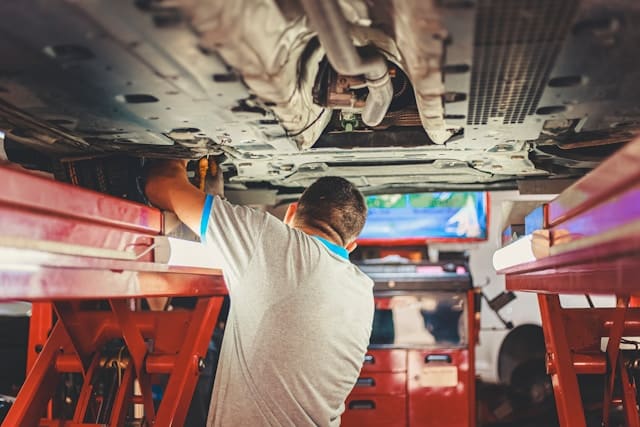How to Protect Your Car’s Underbody from Corrosion Post-Repair
 After your vehicle undergoes any significant repair, especially if the underbody was affected, it’s crucial to take steps to protect it from corrosion. The underbody of a car is particularly vulnerable to rust because it is continuously exposed to road debris, moisture, and chemicals such as salt used in winter road treatments. This article will guide you through various effective strategies to protect your car’s underbody from corrosion after repairs, ensuring its longevity and maintaining its structural integrity.
After your vehicle undergoes any significant repair, especially if the underbody was affected, it’s crucial to take steps to protect it from corrosion. The underbody of a car is particularly vulnerable to rust because it is continuously exposed to road debris, moisture, and chemicals such as salt used in winter road treatments. This article will guide you through various effective strategies to protect your car’s underbody from corrosion after repairs, ensuring its longevity and maintaining its structural integrity.
Immediate Post-Repair Protection
Thorough Cleaning
The first step in protecting your car’s underbody is to ensure that it is thoroughly cleaned. Any dirt, grime, or residual salts can hold moisture against the metal surfaces, which accelerates the rusting process. It is advisable to have the underbody washed with a high-pressure hose at a professional car wash that can remove all the build-up from hard-to-reach areas.
Drying
Once cleaned, the underbody should be completely dried to ensure no standing water can begin the rusting process. In professional settings, high-powered air movers are used to thoroughly dry hard-to-reach spots quickly.
Inspection
After cleaning and drying, a detailed inspection by a qualified technician can identify any areas that might be particularly susceptible to rust, such as bare metal spots or places where the protective coating has been compromised during the repair process.
Applying Protective Coatings
Rust-Proofing Products
There are various products available that can be applied to the underbody to prevent rust. These include rubberized undercoatings, which seal the underbody from the corrosive effects of salts, moisture, and other harmful chemicals. Another option is wax-based sealants, which provide a less durable but easier-to-apply solution.
Professional Application
While some car owners might consider applying undercoating products themselves, professional application ensures that the materials are applied evenly and comprehensively. Technicians can also reach areas that are typically difficult to access, providing more thorough protection.
Regular Maintenance
Scheduled Inspections
Regular inspections of the underbody can catch the early signs of rust before they become a significant problem. These inspections are particularly important in climates with high humidity or where roads are treated with salt during the winter months.
Prompt Repairs
If any signs of rust are detected during an inspection, it is crucial to address them immediately. Small rust spots can often be treated simply by applying a rust converter and touch-up paint. However, larger areas may require more extensive repairs.
Additional Protective Measures
Avoiding Harsh Conditions
Whenever possible, try to avoid driving in conditions that promote underbody corrosion. This includes driving on salt-treated roads and through large puddles, which can splash corrosive materials up into the underbody.
Regular Washing
In winter months or in coastal areas where salt is a significant issue, regularly washing the underbody can remove salt and other corrosive substances. This is especially important after driving in snow or on salted streets.
Conclusion
Protecting your car’s underbody from corrosion after repairs is crucial for maintaining the vehicle’s overall health and value. By ensuring thorough post-repair cleaning and drying, applying protective coatings, conducting regular inspections, and performing prompt maintenance, you can significantly extend the life of your vehicle’s underbody. Remember, the key to effective corrosion protection is consistency and attention to detail.
